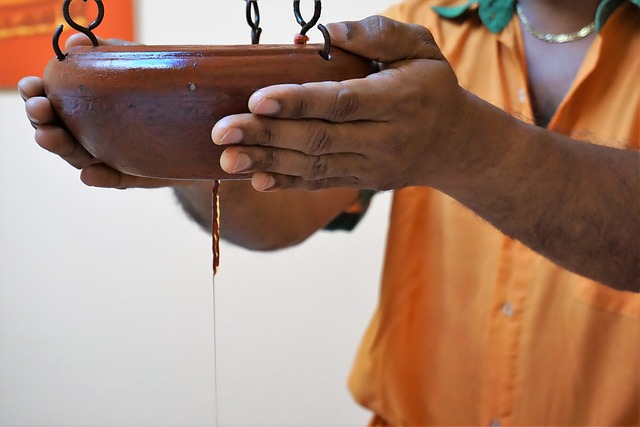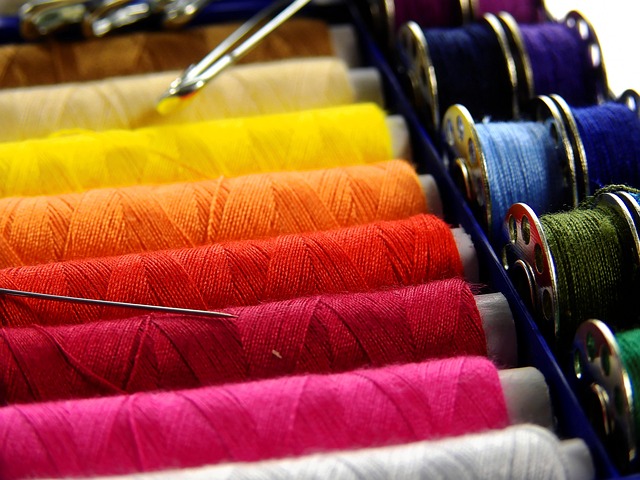-By: Bhavisha Changrani
The fashion industry, a global behemoth built on the allure of constant novelty, faces a reckoning. Its linear model – take, make, dispose – has resulted in a staggering environmental toll: overflowing landfills, polluted waterways, and a significant contribution to greenhouse gas emissions.
But a paradigm shift is underway, driven by growing consumer awareness and innovative business models: the rise of circular fashion.
Circular fashion, at its core, is about reimagining the lifecycle of clothing. It moves beyond the traditional linear model, embracing a closed-loop system where resources are continuously reused and regenerated. This approach seeks to minimize waste, reduce environmental impact, and create a more sustainable and equitable fashion ecosystem. This article delves into the key pillars of circular fashion – resale, upcycling, and rental – exploring their potential to revolutionize the industry.

The Unsustainable Status Quo: A Wake-Up Call
Before diving into the solutions, it’s crucial to understand the magnitude of the problem. The fast fashion phenomenon, fueled by low prices and rapid trend cycles, has led to an unprecedented surge in clothing consumption. This has resulted in:
Mountains of Textile Waste:
Millions of tons of clothing end up in landfills annually, where they decompose, releasing harmful greenhouse gases.
Water Pollution
The production of textiles, particularly cotton, requires vast amounts of water and often involves the use of toxic chemicals that pollute waterways.
Carbon Emissions
The fashion industry’s supply chain, from raw material extraction to manufacturing and transportation, contributes significantly to carbon emissions.
Exploitation of Labor:
Many garment workers face poor working conditions and low wages, particularly in developing countries. This unsustainable model is not only environmentally destructive but also socially unjust. The need for a fundamental change is undeniable, and circular fashion offers a viable alternative.

Resale:
Giving Clothes a Second (or Third) LifeResale, the practice of buying and selling pre-owned clothing, is a cornerstone of circular fashion. It extends the lifespan of garments, reduces the demand for new production, and diverts clothing from landfills. The rise of online platforms like ThredUp, Poshmark, and Depop has democratized resale, making it accessible to a wider audience.
The Appeal of Affordability and Uniqueness:
Resale offers consumers the opportunity to find unique, high-quality items at affordable prices. It caters to those seeking vintage finds, designer pieces, or simply a more sustainable way to shop.
The Growth of Luxury Resale:
The luxury resale market is booming, as consumers become increasingly comfortable buying pre-owned designer items. Platforms like The RealReal and Vestiaire Collective authenticate and curate luxury goods, ensuring their quality and authenticity.
Brand-Led Resale Initiatives:
Many brands are now launching their own resale programs, taking ownership of their products’ lifecycle. This not only generates revenue but also strengthens brand loyalty and promotes sustainability.
The Psychological Shift:
The stigma associated with buying secondhand clothing is fading, replaced by a growing appreciation for its environmental and economic benefits.

Upcycling: Transforming Waste into Treasure
Upcycling takes the concept of reuse to the next level, transforming discarded materials into new, higher-value products. It’s a creative and innovative approach to reducing waste and giving materials a second chance.
The Art of Reconstruction:
Upcycling involves deconstructing old garments and textiles and repurposing them into new designs. This requires creativity, skill, and a deep understanding of materials.
The Rise of Independent Upcycling Designers:
Many independent designers are embracing upcycling, creating unique and one-of-a-kind pieces from discarded materials. They are challenging the traditional notion of fashion and demonstrating the potential of sustainable design.

Brand Collaboration with Upcyclers:
Some brands are partnering with upcycling designers to create limited-edition collections, showcasing the potential of this sustainable approach.
The Importance of Material Innovation:
Upcycling often involves experimenting with unconventional materials, such as textile scraps, plastic waste, and even food waste. This drives innovation and promotes the development of new sustainable materials.
DIY and Community Upcycling:
Upcycling is also accessible to individuals through DIY projects and community workshops. This empowers people to take control of their consumption and create their own sustainable fashion pieces.
Rental Models: Access Over Ownership
Rental models offer a compelling alternative to traditional ownership, providing consumers with access to a wide range of clothing without the need to purchase them. This approach is particularly appealing for special occasions, seasonal wardrobes, and those seeking to experiment with different styles.
The Rise of Rental Platforms:
Platforms like Rent the Runway and Nuuly have revolutionized the rental market, offering curated collections of designer clothing and accessories.

The Benefits of Variety and Sustainability:
Rental allows consumers to access a diverse wardrobe without contributing to overconsumption. It’s a sustainable way to enjoy fashion without the environmental footprint of ownership.
The Growth of Peer-to-Peer Rental:
Peer-to-peer rental platforms connect individuals who want to rent out their own clothing, creating a community-based approach to sustainable fashion.
Brand-Owned Rental Services:
Brands are also launching their own rental services, providing customers with access to their collections on a temporary basis. This allows brands to test new styles and generate revenue from their existing inventory.
The Changing Consumer Mindset:
Rental models reflect a shift in consumer mindset, moving away from ownership towards access and experience. This trend is particularly prevalent among younger generations who value flexibility and sustainability.
Challenges and Opportunities
While circular fashion offers immense potential, it also faces challenges.
Scaling Up Circular Models:
Scaling up resale, upcycling, and rental models requires significant investment in infrastructure, technology, and logistics.

Ensuring Quality and Durability:
The success of circular models depends on the quality and durability of clothing. Brands need to prioritize sustainable materials and manufacturing processes.
Addressing Consumer Behavior:
Changing consumer behavior is crucial for the widespread adoption of circular fashion. Education and awareness campaigns are needed to promote sustainable consumption practices.
The Need for Policy Support:
Government policies and regulations can play a vital role in incentivizing circular practices and promoting sustainable fashion.
Technological Innovation:
Technology can play a vital role in enhancing circular models, such as using AI to track clothing lifecycles and blockchain to ensure transparency in supply chains.
However, the opportunities are vast.
Creating New Jobs and Businesses:
The circular fashion economy has the potential to create new jobs and businesses in areas such as resale, upcycling, repair, and rental.
Reducing Environmental Impact:
By embracing circularity, the fashion industry can significantly reduce its environmental footprint.
Promoting Social Equity:
Circular models can create more equitable and just supply chains, ensuring fair wages and working conditions for garment workers.
Driving Innovation:
The pursuit of circularity will drive innovation in materials, design, and manufacturing processes.
Building a More Sustainable Future:
Circular fashion is not just a trend; it’s a fundamental shift towards a more sustainable and responsible future for the fashion industry.

The Future of Circular Fashion: A Collaborative Effort
The transition to a circular fashion system requires a collaborative effort from all stakeholders, including brands, consumers, policymakers, and innovators. Brands need to embrace circular design principles, invest in sustainable materials, and develop innovative business models. Consumers need to make conscious purchasing decisions, support sustainable brands, and participate in resale, upcycling, and rental initiatives. Policymakers need to create a supportive regulatory environment that incentivizes circular practices. And innovators need to develop new technologies and solutions that enable the transition to a circular economy. The rise of circular fashion is not just about addressing the environmental and social problems caused by the current linear model. It’s about creating a more sustainable, equitable, and inspiring future for fashion. It’s about reimagining the relationship between people and their clothing, moving away from a culture of disposability towards a culture of reuse, repair, and regeneration. The future of fashion is circular, and it’s up to all of us to make it a reality.












